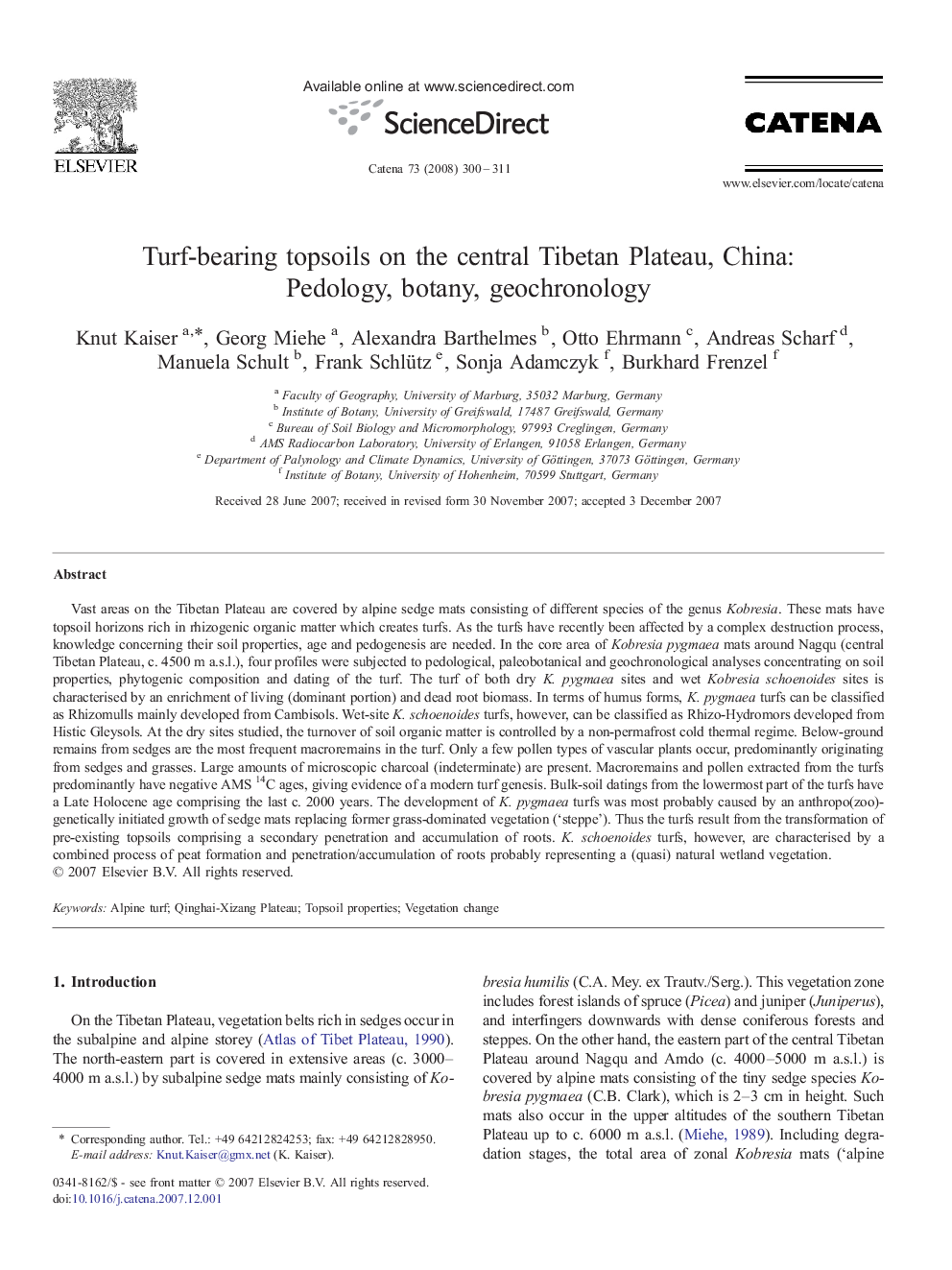| کد مقاله | کد نشریه | سال انتشار | مقاله انگلیسی | نسخه تمام متن |
|---|---|---|---|---|
| 4572508 | 1332181 | 2008 | 12 صفحه PDF | دانلود رایگان |

Vast areas on the Tibetan Plateau are covered by alpine sedge mats consisting of different species of the genus Kobresia. These mats have topsoil horizons rich in rhizogenic organic matter which creates turfs. As the turfs have recently been affected by a complex destruction process, knowledge concerning their soil properties, age and pedogenesis are needed. In the core area of Kobresia pygmaea mats around Nagqu (central Tibetan Plateau, c. 4500 m a.s.l.), four profiles were subjected to pedological, paleobotanical and geochronological analyses concentrating on soil properties, phytogenic composition and dating of the turf. The turf of both dry K. pygmaea sites and wet Kobresia schoenoides sites is characterised by an enrichment of living (dominant portion) and dead root biomass. In terms of humus forms, K. pygmaea turfs can be classified as Rhizomulls mainly developed from Cambisols. Wet-site K. schoenoides turfs, however, can be classified as Rhizo-Hydromors developed from Histic Gleysols. At the dry sites studied, the turnover of soil organic matter is controlled by a non-permafrost cold thermal regime. Below-ground remains from sedges are the most frequent macroremains in the turf. Only a few pollen types of vascular plants occur, predominantly originating from sedges and grasses. Large amounts of microscopic charcoal (indeterminate) are present. Macroremains and pollen extracted from the turfs predominantly have negative AMS 14C ages, giving evidence of a modern turf genesis. Bulk-soil datings from the lowermost part of the turfs have a Late Holocene age comprising the last c. 2000 years. The development of K. pygmaea turfs was most probably caused by an anthropo(zoo)-genetically initiated growth of sedge mats replacing former grass-dominated vegetation (‘steppe’). Thus the turfs result from the transformation of pre-existing topsoils comprising a secondary penetration and accumulation of roots. K. schoenoides turfs, however, are characterised by a combined process of peat formation and penetration/accumulation of roots probably representing a (quasi) natural wetland vegetation.
Journal: CATENA - Volume 73, Issue 3, 15 May 2008, Pages 300–311